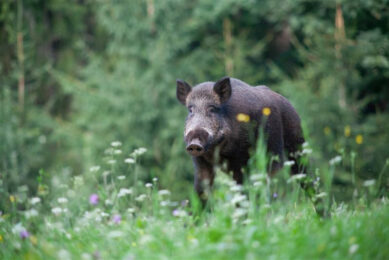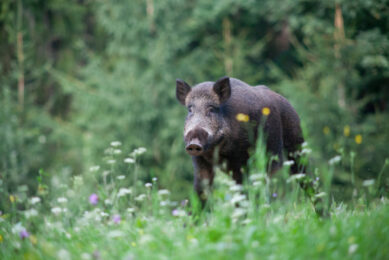Keep an open mind

Being a pig producer requires a permanently open mind, perhaps more now than in previous times. That, for me, was the major take home message from this year’s World Pork Expo, held in Des Moines, IA, United States.
In contrast to last year, PED was not the main theme, but the imminent ban on antibiotics as growth promoters in the United States, as from January 1, 2017.
It means that pig production will have to change its ways. Just like anywhere, change means uncertainty. What is the new situation going to bring? How to ensure that the animals will grow well? Often heard in the US is the argument how are we guarantee that the consumers get safe food?
Controlling antibiotics in US pork production
The US National Pork Board therefore rolled out a ‘stewardship plan to guide and support the responsible use of antibiotics‘. Still, I noticed quite a lot of uneasiness, questions, hesitation and relatively few voices echoed a willingness to see beyond that horizon.
Change apparently is difficult – it’s the same reaction I observe with that other challenge the US pig industry is facing, i.e. the conversion from stalls to group housing for gestating sows. Dominant here as well are the question marks, the conviction that it is detrimental for both animal welfare and animal health due to fighting, as well as requiring more space, all ultimately leading to more costs.
Learning lessons
The same kind of questions the European pig industry had about ten years ago. Looking at the knowledge gathered there I’m confident to say that initial problems can be overcome by a deeper understanding of how pigs tick. I can’t think of any better way of describing this. My analysis is that when the pig industry professionalised, roughly from about the 1960s, pigs were made to fit within the frameworks that would be easiest for humans to manage them.
Put many gestating sows together in one house and you’ll notice aggression. In addition, how to manage them all? The initial solution to all that was to put them in crates. Keeping many piglets together in one house led to increased disease pressure. Why not use a little bit antibiotics, just to keep them healthy and even help them grow quicker?
Both strategies, I think, have proved to be quick fixes, strategies to repair phenomena rather than try to understand the nature of the problem and solve that. Only when the pigs rather than the humans were taken as the centre of the farm strategy, a different line of thought emerged.
Biosecurity in pig production
I think it doesn’t need explaining that the PEDv outbreaks in the US clearly demonstrated that substantially higher levels of biosecurity could have avoided the large impact the virus had on the US pig population. Only read this contribution on a novel philosophy how to produce pigs, taking a high hygiene status as the basis, and it becomes clear that there definitely is some truth in the fact that using antibiotics in fact served to cover up relatively low hygiene conditions.
De Zwartakkers Farm in Bladel, the Netherlands
Producers simply failed to see the hygiene flaws in their system, which in a way unnecessarily exposed their pigs to pathogens. Understanding when and how pathogens can spread and knowing the laws of cross-contamination on pig farms, thus helps producers be better farmers.
Best time to mix gestating sows
The same goes for aggression in sows. They do fight in groups – true – but they don’t always fight. So why do they fight, when do they fight, and in what situations does it matter? In short – to establish hierarchy, only for a few days after mixing, and when the embryos settle in the uterus.
Experience suggests that mixing the sows between roughly days 5 and 25 after insemination is not a good idea, as that is the timeframe when embryos are vulnerable while settling in the sow’s uterine horns. In all other cases – before or after this timeframe – mixing is very well possible.
Smeenk Farm in Haarle, the Netherlands, equipped with ESF system
With the Electronic Sow Feeding systems, available from many players in the industry, the management is simpler as the computer using eartags can recognise and select each sow in every state of its gestation.
Add to that that computerised monitoring generates more data than producers ever could generate with sow stalls; and with sows given the opportunity of exercise in group housing the animals are in a better condition for farrowing.
Embracing new pig management strategies
In both cases, success can be achieved by a better understanding and a willingness to embrace new management strategies. That way, truths, held for decades, might prove not to be as rock solid as were always thought. Instead, the new ways of thinking open new doors and a level of understanding which I would call key to being truly professional.
Research is underway in the US – on sow stalls and antibiotics as well. I’m sure it will not be long before US research institutes and universities will be able to share their discoveries with their producers as well.











